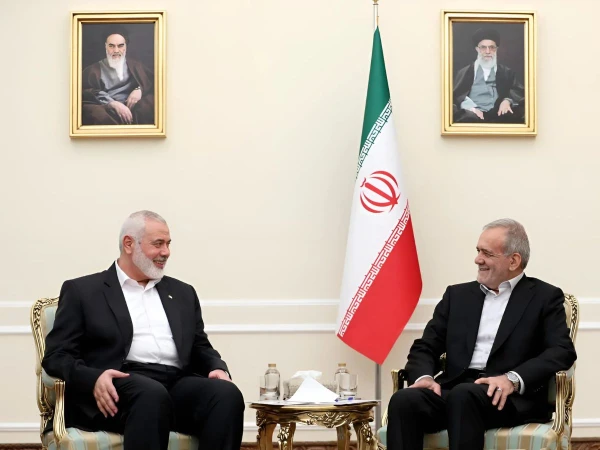On July 31, 2023, Hamas leader Ismail Haniyeh was killed in a mysterious explosion at a state guest house in the highly sensitive area of Tehran, shortly after President Masoud Pzeshkian’s swearing-in ceremony.
International news agencies reported that both Iran and Hamas blamed Israel for the assassination, though Israel never officially confirmed or denied the claims. However, a few days ago, Israeli Foreign Minister Eli Cohen revealed that Israel was behind Haniyeh’s death.
Following this revelation, Israeli media released details about the plans to assassinate Haniyeh and the delays that had occurred. Israeli reports suggest that the operation was postponed to avoid embarrassing Iran further before the inauguration of its new president. Had the assassination been carried out earlier, Haniyeh could have been targeted before the ceremony.
Initially, after the assassination, Iran’s Revolutionary Guard had misinformed Supreme Leader Ayatollah Ali Khamenei, claiming that Haniyeh’s death was due to an Israeli missile strike. Israeli media later disclosed that the assassination plot was hatched after Hamas’s October 7, 2023, attack on Israel.
Haniyeh, who was residing in Qatar at the time, was not targeted there to avoid disrupting ongoing negotiations for the release of hostages. Israel considered options in Turkey, Russia, and Iran, where Haniyeh often traveled. However, Turkey’s response could have been problematic, and Israel did not want to risk angering Russian President Vladimir Putin.
According to Israeli intelligence, Iran was chosen as the most feasible location for the operation. Haniyeh frequently stayed in a guest house in the upscale Saadatabad neighborhood of northern Tehran, making the assassination plan more straightforward.
Initially, Israel intended to strike during Haniyeh’s visit to Tehran on May 19 to attend the funeral of former Iranian president Ibrahim Raisi, who died in a helicopter crash. However, the large number of civilian attendees at the funeral prompted Israel to delay the operation to avoid civilian casualties.
It was later decided that the assassination would take place on the morning of the swearing-in ceremony of President Pzeshkian. Israeli agents planted an improvised explosive device (IED) in Haniyeh’s room before the ceremony. Despite the explosive being larger than planned, it was not strong enough to damage nearby rooms but had enough power to kill Haniyeh on the spot.
After the ceremony, Haniyeh returned to his room, and everything seemed normal until his air conditioner malfunctioned. He moved to a different room, far enough from the explosion that he was not harmed. Israeli agents, thinking the operation had failed, waited for Haniyeh to return to his original room. Once he did, the IED was detonated at 1:30 AM, causing significant damage to the wall of the room but ultimately achieving its purpose — Ismail Haniyeh was dead.
Within seconds, a medical team from the Revolutionary Guard arrived at the scene but found Haniyeh already dead. Haniyeh’s deputy, Khalil al-Hayya, also arrived at the scene and collapsed in grief, seeing the bloodied body of his leader.
Experts on security matters have suggested that such a complex operation could not have been carried out without the help of an Iranian, a member of the Revolutionary Guard, or a Hamas official. Israeli media reports confirm that Iran, Hamas, and Israeli intelligence agencies have all thoroughly investigated these three possibilities.
Following the assassination, Iran faced significant embarrassment. The incident caused widespread panic, and Quds Force commander Ismail Qaani disappeared from public view for several weeks while investigations were underway to determine why he failed to prevent the plot.
Hours after the assassination, Qaani reportedly called Supreme Leader Khamenei, crying and falsely claiming that Haniyeh had been killed by an Israeli missile strike. This led Khamenei to call for an immediate retaliatory strike against Israel, but further complications arose as Iran’s initial claims were debunked.
Eventually, on October 1, Iran launched a retaliatory attack against Israel, which was largely thwarted by the Israeli Defense Forces (IDF) in coordination with U.S. and Jordanian forces.
Following Haniyeh’s death, his position was taken over by Yahya Sinwar, but he too was killed in a skirmish with Israeli forces in the southern Gaza city of Rafah on October 16, just weeks after assuming leadership.
The assassination of Ismail Haniyeh and the subsequent events continue to raise questions about the intricate web of Middle Eastern politics and Israel’s strategic operations in the region.
Submit Your Story
Let your voice be heard with The Azadi Times
